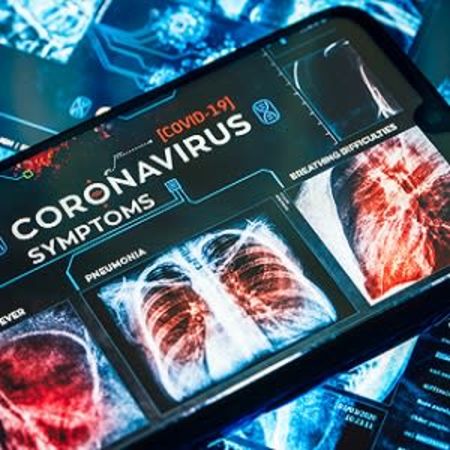In early December 2019, the coronavirus disease (COVID 19) outbreak was first reported in the city of Wuhan, China. Early reports indicated that the virus was acquired from bats. Several epidemiological studies have linked the exposure to COVID-19 to the Wuhan meat market, which sold a variety of wild live animals. Today, it is well known that human to human transmission is a common mode of spread. Once acquired, the incubation period of COVID-19 is about 10-14 days following exposure. Although many anecdotal reports about the infection have been published, there is still a great deal more to learn as to how the disease presents, its course, and prognosis.
This is one of the first case series to reveal the clinical course and prognosis of COVID 19 patients. The retrospective case study was undertaken at two hospitals in Wuhan, China, the epicenter of the COVID-9 outbreak. The study evaluated patients admitted until February 2020. The diagnosis of coronavirus was confirmed by real-time PCR. The clinical course of non-survivors and survivors was compared, and the risk factors for mortality were evaluated.
Results
A total of 107 discharged patients with COVID 19 were enrolled in the study. Of the 107 discharged patients, there were 88 survivors and 19 non-survivors. The clinical course of COVID 19 presented in the tri-weekly phasic pattern. During Week 1, after the onset of the infection, patients developed a cough, fever, shortness of breath, lymphopaenia, and multi-lobar lung infiltrates visible on the chest x-ray. Patients with severe disease also developed acute renal failure, thrombocytopaenia, acute cardiac injury, and adult respiratory distress syndrome.
During week 2, patients with mild disease had a cough and fever, but the systemic features of the illness began to subside with normalisation of the platelet count; however, lymphopaenia persisted. In patients with severe disease, there was neutrophilia, leukocytosis, and multi-organ dysfunction. The second phase appeared to be the most critical; patients who continued to do well clinically had their symptoms resolved, but in patients where this was not the case, condition continued to worsen in the following week.
By week 3, patients with mild disease had clinically resolved except for the lymphopaenia. Patients with severe disease continued to show lymphopaenia, ARDS, acute renal failure, shock-like features, thrombocytopaenia, coagulopathy, and ultimately death. Independent risk factors that were identified for poor outcome included advanced age and male gender.
Conclusion
The researchers noted that of the triphasic illness pattern, days 7-13 were the most critical. Patients who showed signs of improvement during this period did well, but patients who showed clinical signs of worsening had a poor prognosis. This is one of the first studies to provide a complete clinical picture of COVID-19. Unfortunately, as yet, there is no specific treatment, and all treatments are empirical and symptom mediated.
Source: Critical Care
Image Credit: iStock
References:
Wang et al. (2020) Clinical course and outcome of 107 patients infected with the novel coronavirus, SARS-CoV-2, discharged from two hospitals in Wuhan, China. Critical Care.
Latest Articles
symptoms, Coronavirus, Wuhan, COVID-19
Clinical Course and Prognosis of COVID-19 - Experience from Wuhan



























